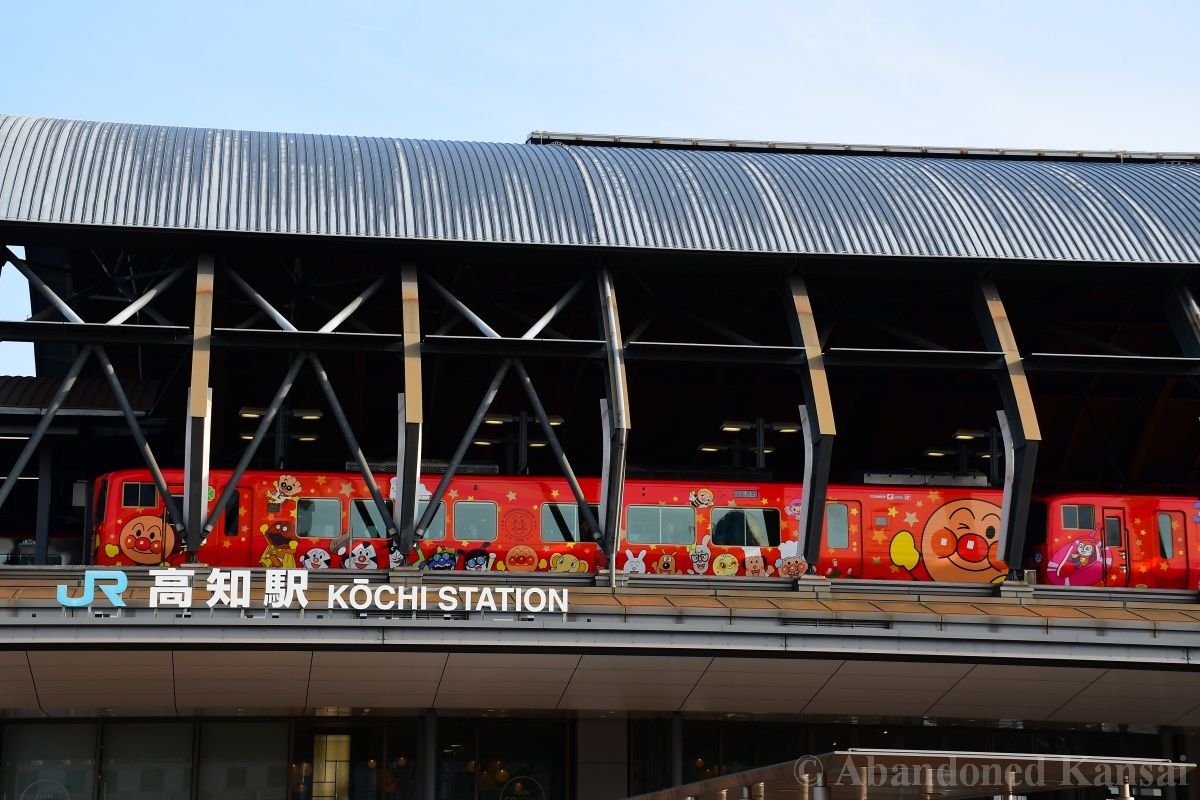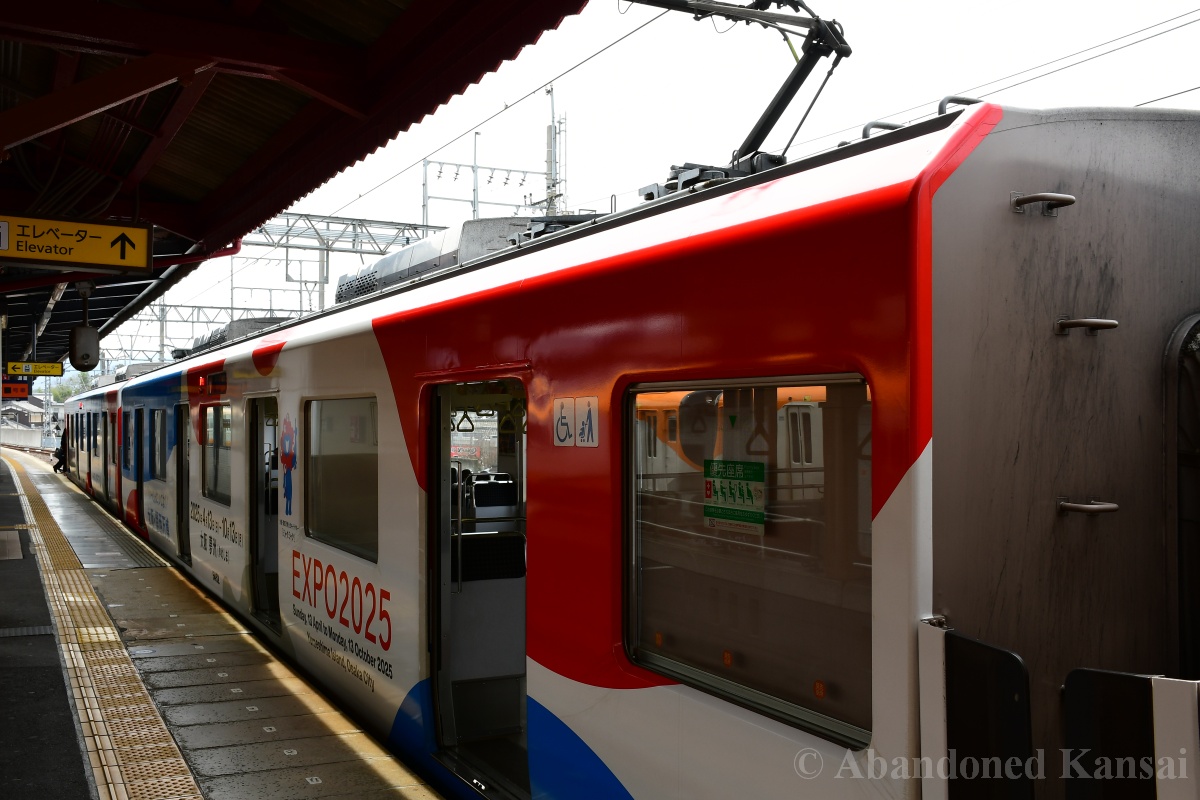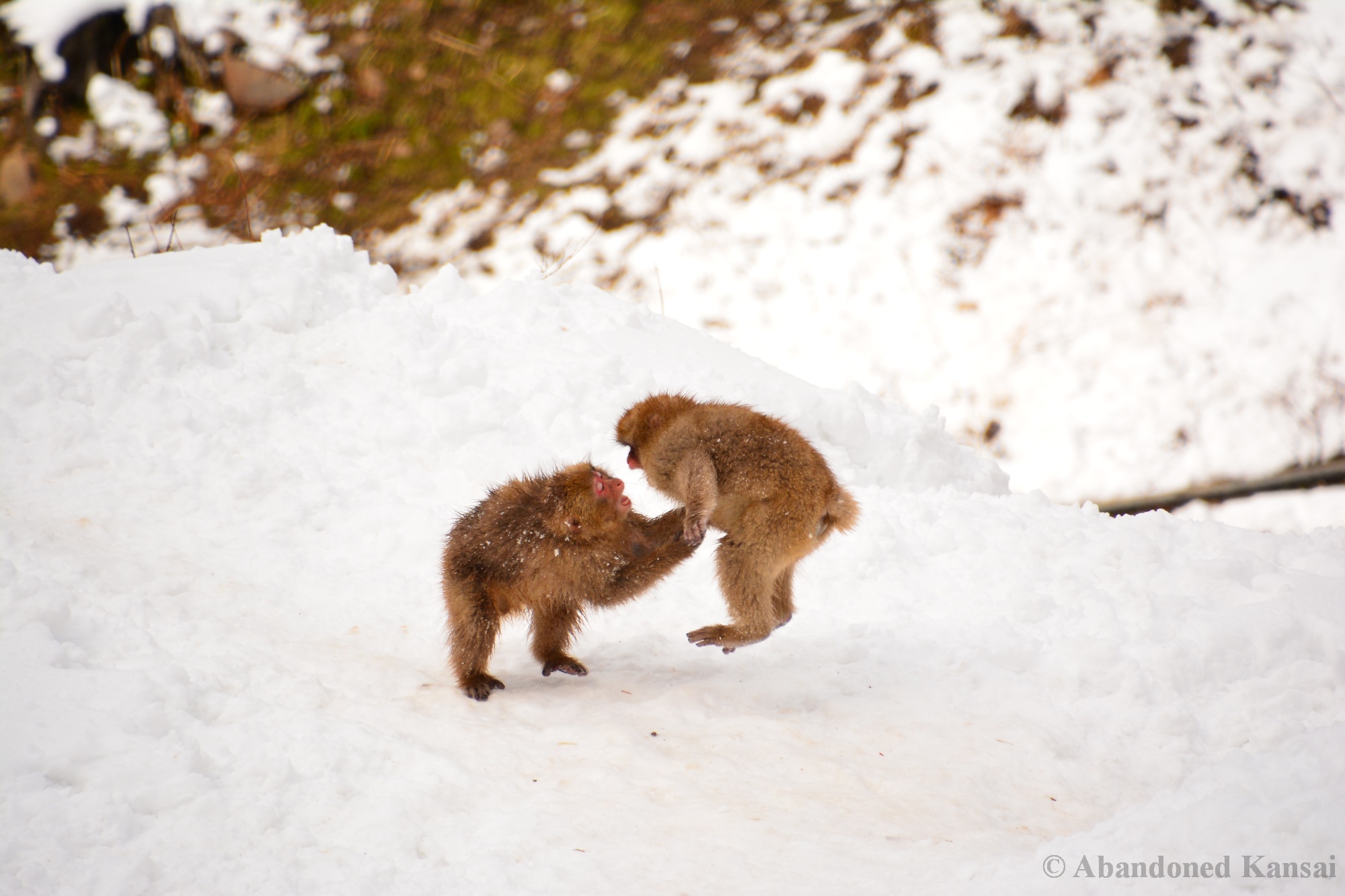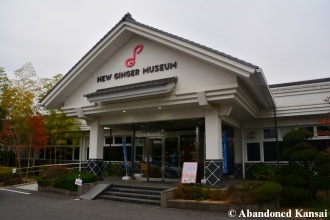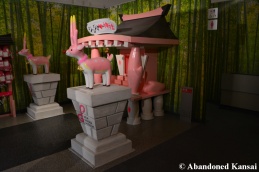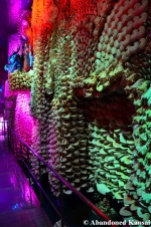When I first came to Japan in 1998 the country had only 4.1 million foreign visitors. I was in my second year at university, traveled alone and barely ever saw another tourist (despite being there during cherry blossom season!), neither the internet nor cell phones were common, and Japan had a reputation for being kind of “inaccessible” – and expensive. The good old days…
By the time I moved to Japan in 2006 the number of tourists had almost doubled to 7.3 million, but that didn’t really matter to me, especially since they kept going up and down. Being a tourist and being an expat (i.e. being a tax payer with a job!) are two completely different things, two completely different experiences; especially in Japan. It’s like visiting an amusement park and working in an amusement park! And as a new hire at a Japanese company I neither had the time nor the financial resources, so for the first two or three years all I saw of Japan was Kansai in day trips. Now, there is a lot to see and do in this area, so I didn’t feel restricted – I was just living my daily life and my vacation time I spent visiting family and friends back home.
In late 2009 I picked up urban exploration as a hobby and a few months later started this blog, Abandoned Kansai. Kansai, because that was my home, the area I was familiar with, the area I traveled well. Not Abandoned Japan, because I never expected that I would travel much outside of Kansai – I hadn’t for three years, so why start now?
Well, because I wanted to document certain abandoned places in other prefectures, as I realized rather quickly… Two months after the *Mount Atago Cable Car* I did my first exploration in another region (Chubu), three months later I went to another main island (Kyushu) – and eight years later I traveled so much that I covered all nine regions of Japan (Hokkaido, Tohoku, Kanto, Chubu, Kansai, Chugoku, Shikoku, Kyushu, and Okinawa) within one calendar year! Though it wasn’t until 2020 that I had visited and explored abandoned places in all of Japan’s 47 prefectures… (Ehime was last ؘ– by something like two years!)
For the first few years those urbex trips were more or less strictly urbex trips. I did them to explore certain abandoned places, *a lot of which don’t exist anymore as described in this article*, with little time for other things to do, except enjoying local food after sunset. And I didn’t think much about it, because I lived in Japan. I could go sightseeing at any time anyway! Meanwhile Abe and his monkey bunch decided that Japan should be a vacation destination (under his reign the number of tourists exploded from 6.2 million to 31.9 million visitors!) and aggressively pushed for overseas tourists by devaluating the Yen, propaganda campaigns and tax exemptions for shoppers from overseas while raising taxes on his own people, including doubling the consumption tax in two steps. Anyway, Japan became more and more popular worldwide, including among urban explorers, some of which came for hardcore trips with half a dozen locations per day, hardly any sleep, and definitely no sightseeing – which changed my attitude towards my own trips within Japan significantly around 2015/2016, because I felt so sorry for those poor souls who came all this way and experienced little more than moldy buildings similar to others in the rest of the world. Unfortunately for me around that time Japan had already passed the 20 million mass market mark, 5 times as many tourists as I was used to in 1998. Nearby places like Kyoto and Nara had already become unbearable as I found out on occasion when friends and family visited me in my new home country, but even in places like Otaru I heard more Chinese than Japanese in the streets as tourists from China went from 267k in 1998 to 9.6 million in 2019, the last full year of worldwide tourism before the coronavirus. To me overtourism is one of the ultimate turnoffs in life. And that’s a general thing. When I’m in Otaru I don’t want to hear Chinese everywhere, when I’m at the Great Wall I don’t want to hear Italian everywhere, when I’m at the Coliseum I don’t want to hear German everywhere, when I’m at the Berlin Wall I don’t want to hear Russian everywhere, when I’m at the Red Square I don’t want to hear French everywhere – and when I’m at the Eiffel Tower I don’t want Japanese to be the dominant language. So as much as I tried to implement touristic places into my urbex trips I mainly limited them to rather off the beaten track locations like Hirosaki or Lake Ikeda, because even places like Hakodate, Kanazawa, or Nagasaki had been overrun by the Eurasian hordes. (And it’s not just the amount of people and their constant yapping, it’s also the (misbehaving) type of people that visited Japan in recent years. When the country was still special interest, in the 20th century, people went to Japan for specific reasons; to see or do something, to educate themselves about a certain topic – nowadays it seems to be a cool Instagram location for dumb phonies with selfish sticks that book flights to Japan and then go through the Top 5 lists on Instagram, Tripadvisor, or some “True soul of Japan!!!” blogger to find out what they can actually brag about on social media with. The amount of signs EVERYWHERE about “How to use a toilet!” / “How to not misbehave!” in four languages has become ridiculous and should be embarrassing to every person visiting Japan. Unfortunately most tourists don’t seem to be bothered by those signs as they are too self-absorbed and busy taking selfies, but as somebody who lives here I feel bad that locals need to state the obvious so often as visitors have become a serious nuisance.)
When the coronavirus spread across the world in late 2019 / early 2020 Japan was one of the last countries to close its borders, desperately clinging to its Frankenstein’s monster tourism industry and the Tokyo Olympics. Despite that, the country was hit much less hard than most others due to cultural coincidences – Japanese people are not exactly affectionate in public / outside of the family, and wearing masks is a long-standing flu season tradition, so what prevented spreading the coronavirus (avoiding close contact and wearing masks) was common practice in Japan anyway. If kisses on the cheeks and drinking red wine would have prevented the disease, France would have done much better and Japan would have been screwed… Anyway, Japan did comparatively well (though it is currently hitting record high numbers!), so the overall terribly phlegmatic Japanese government imposed only few restrictions, most of them in form of “recommendations”. Since recommendations usually are considered orders due to preemptive obedience, I spent most of the summer 2020 working from home, a liberating and deeply frustrating experience at the same time as I didn’t meet any friends for months and left my hamster cage maybe three times a week for grocery shopping to avoid the second wave, that’s it; work, eat, sleep, repeat. The same for a few weeks around New Year’s Day – while Japanese people were visiting their families (recommendations are only followed unless people really don’t want to…) I sat alone at home and skyped with mine to get past the third wave.
February: Matsumoto, Nagano, Obuse, Gero, Takayama, Shirakawa-go, Kanazawa
In early 2020 things went “back to normal” in Japan with as few as 698 new cases per day nationwide (Kanto and Kansai being responsible for the vast majority of cases and some prefectures going down to 0 active cases and no new infections for weeks!), so I decided to jump on the opportunity and visit some places that had been unbearably crowed in the last five to eight years – especially since some of my regular co-explorers had become increasingly busy with fur and other babies. My first main destination on February 12th, after nights in Matsumoto and Nagano (where I had been years prior on the way to the abandoned *Asama Volcano Museum*), were the famous onsen snow macaques in the Jigokudani Monkey Park; a place so touristy and swamped that my buddy Hamish discouraged me from going there many, many years ago. Upon my arrival towards noon I shared the park with hardly more than a dozen people, and that number barely doubled during my hour long stay there – now that turned out even much better than I had hoped for in my wildest dreams! 🙂 So for the next weekend I made even bolder plans, for a place usually so overrun by busloads of foreign and domestic tourists that you could have offered me serious money to go there and I would have declined without hesitating – Shirakawa-go in winter! And to make it the ultimate challenge I added Takayama the day before and Kanazawa the day after, with a quick stop in Gero on the way to Takayama. What can I say? Gero was lovely, Takayama absolutely gorgeous, Kanazawa virtually empty (I was able to take photos in the old samurai district without people ruining them!), and Shirakawa-go… Shirakawa-go was still busy, but bearable. Already borderline too busy for my taste, but knowing that there usually were five or ten times as many people made me enjoy my visit much more than expected. (The car parking lots were rather busy, the bus parking spots basically empty – the lack of mass tourism saved my day!)
March 2021: Hokkaido, Yamaguchi, Kamakura / Hakone
March started with another touristy trip to Hokkaido. If you are a regular of Abandoned Kansai and paid attention reading my article about the *Toya-Usu Geopark* you already know that I had been up north in early November – too early for the drift ice of the Okhotsk Sea, so I went back just four months and a coronavirus wave later. Despite the unusually warm weather in Abashiri (10°C!) I was able to experience the drift ice by pure luck before moving on to Kitami and the peppermint museum, Onneyu Onsen and the fox farm, as well as the mostly closed Sounkyo Onsen and its ice festival (-9°C and strong wind!). Also worth mentioning was my stop in Asahikawa and its cross country ski track right behind the main train station in the city center. Gotta love Japan! Two weeks later I took advantage of the early cherry blossom season and went south – Iwakuni, Tsuwano, Hagi, and Akiyoshido / Akiyoshidai. All four places rather off the beaten tracks, but even more so in the spring of 2021. On both of those trips I didn’t see a single non-Asian person after my first stop (New Chitose Airport and Iwakuni respectively), which gave me serious flashbacks to 1998 – not only did I enjoy both of those trips tremendously, I felt young again! 🙂
Next a trip to Kanto (Kamakura, Odawara, Hakone) with a quick stop in Omihachiman on the way back – as expected full of ups and downs, both literally and figuratively… and with significantly more people than on the trips before. Overall worth the time and effort, but especially Hakone seemed terribly overrated to me (the Museum Of Photography is a joke, but the pizza at 808 Monsmare made up for that disappointment).
April: Tateyama Kurobe Alpine Route, Tsumago / Magome
Which brings us to April and one more cliché destination for Instagram victims: the Tateyama Kurobe Alpine Route with the Tateyama Snow Wall and the Kurobe Dam. The latter is impressive, but in the end just a dam with little to see and do in spring, whereas the snow wall is only accessible / existing in spring as that part is closed in winter. Summer and autumn promises tons of nature, a boat cruise on Lake Kurobe, and heaps of hiking trails, but when you do the route in spring you basically only get the snow wall and lots of waiting in line without proper social distancing / climbing stairs. Really disappointing! Fortunately I was able to visit two gorgeous post towns called Tsumago and Magome on my way back to Osucka, which was absolutely lovely – I’d call them hidden gems, but Magome was already surprisingly busy, I can only imagine how insanely crowded the town has been and probably will be again soon.
May: Oga, Akita, Tsuruoka, Niigata, Aizu-Wakamatsu, Ouchi
Golden Week was my final opportunity to travel before most of Japan will turn into a hot and humid hellhole for about four months, so I went to Tohoku for the first time in three years, mainly for those locations: The Namahage Museum in Oga, Dewa Sanzan and the five-storey pagoda of Mount Haguro as well as Aizu-Wakamatsu for the Sazaedo (a 225 year old wooden temple with a double-helix staircase) and the Ouchi post town – and my really high expectations were fulfilled and partly surpassed. All of those places were absolutely gorgeous, especially the pagoda and the temple; both of which I had to myself for a couple of minutes between small groups of people supporting domestic tourism like I did. To get to Ouchi I took a tourist train to Yunokami Onsen that featured animations in dark tunnels and made special stops at Ashinomaki Onsen Station (as it “employs” cats as the station master and the rail manager…) as well as at scenic spots along the route. I was the only passenger that day, so the train driver consulted with the conductor that I had taken all the photos I needed before continuing, while the train’s shop lady (on special trains exclusive merchandising is often sold) was visibly amused by the situation; of course there were limits to that, bit apparently we had two or three minutes of wiggle room and weirdly enough they let me take advantage of that!
Final thoughts
Attached you’ll find a rather large gallery… the largest in Abandoned Kansai history. All photos are freehand snapshots as I didn’t bring my tripod or much time to any of those late winter / early spring trips, on some of which I struggled with the weather and lighting (wind, rain, snow, rather extreme temperatures, (lack of) clouds, darkness). Despite having done a lot less urbex than usual this year, this was definitely my most active and probably my favorite spring I’ve spent in Japan. Overtourism has become a problem for many countries and maybe this health crisis will initiate some change – domestic tourists should be more appreciated instead of alienated… and quality instead of quantity be attracted!
I don’t think anybody who experienced 31.9 million tourists to Japan in 2019 really wants to live through 60 million tourists in 2030… Not even the many of my friends who actually work(ed) in the tourism industry!
Oh, and if you are interested in specific locations or trips let me know – I might expand some of those quick sneak peaks into full articles. But first I will publish a spectacular abandoned place next week, one of my all-time favorites. Easily Top 10! 🙂
(*Like Abandoned Kansai on Facebook* or *follow us on Twitter* if you don’t want to miss the latest articles and exclusive content – and subscribe to the *video channel on Youtube* to receive a message right after a new video is online…)
Read Full Post »
